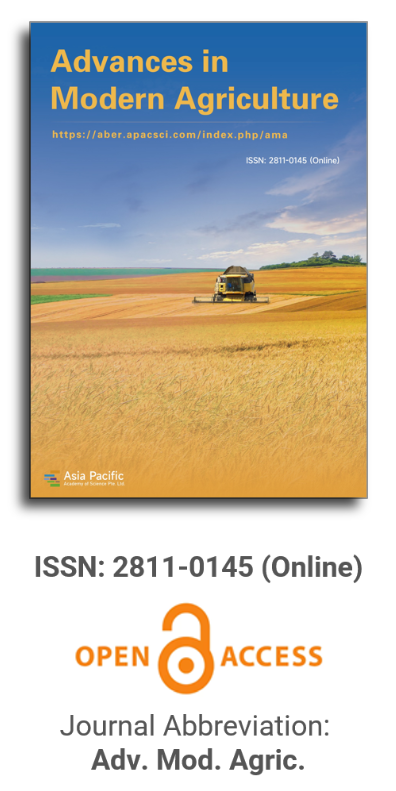


Efficacy of different irrigation methods in saving water and ameliorating pollution in paddy field: Take Pinghu as an example
Vol 1, Issue 1, 2020
VIEWS - 7794 (Abstract)
Download PDF
Abstract
Objective: Improving water use efficiency and ameliorating pollution is a challenge facing agriculture, and this paper aims to present an experimental study on the efficacy of different irrigation methods in saving water and reducing pollution in paddy fields in an attempt to provide suitable management for paddy fields in plain regions. Method: We examined three irrigation methods: flooding irrigation, shallow-water irrigation, and rain-collecting irrigation in Pinghu, Zhejiang province. For each irrigation, we measured TN, TP, NH4+-H, NH3-N, and COD in both irrigation water and drainage water. Result: Compared with flooding and shallow-water irrigation, rain-collecting irrigation reduced the amount of irrigation water by 67.4% and 43.4%, TN loss by 86.9% and 90.7%, emissions of NH4+-H by 96.7% and 98.3%, and COD emissions by 61.5% and 62.5%, respectively. The difference in change of TP and NH3-N between all three irrigation methods was not significant. Conclusion: For the areas we studied, rain-collecting irrigation is most effective in saving water and reducing pollution.
Keywords
References
Refbacks
- There are currently no refbacks.
Copyright (c) 2020 Yi Xu, Yongxiang Wu, Gaoxu Wang, Pei Liu, Ting Guo

This work is licensed under a Creative Commons Attribution 4.0 International License.

This site is licensed under a Creative Commons Attribution 4.0 International License (CC BY 4.0).

Prof. Zhengjun Qiu
Zhejiang University, China

Cheng Sun
Academician of World Academy of Productivity Science; Executive Chairman, World Confederation of Productivity Science China Chapter, China
Indexing & Archiving
In the realm of modern agriculture, the integration of cutting-edge technologies is revolutionizing the way we approach sustainable farming practices. A recent study published in Advances in Modern Agriculture titled "Classification of cotton water stress using convolutional neural networks and UAV-based RGB imagery" has garnered significant attention for its innovative approach to precision irrigation management. Conducted by researchers from Institute of Data Science and the AgriLife Research and Extension Center of Texas A&M University (authors's information is below). This study introduces a novel method for classifying cotton water stress using unmanned aerial vehicles (UAVs) and convolutional neural networks (CNNs), offering a powerful solution for optimizing water use in agriculture.
Modern agricultural technology is evolving rapidly, with scientists collaborating with leading agricultural enterprises to develop intelligent management practices. These practices utilize advanced systems that provide tailored fertilization and treatment options for large-scale land management.
This journal values human initiative and intelligence, and the employment of AI technologies to write papers that replace the human mind is expressly prohibited. When there is a suspicious submission that uses AI tools to quickly piece together and generate research results, the editorial board of the journal will reject the article, and all journals under the publisher's umbrella will prohibit all authors from submitting their articles.
Readers and authors are asked to exercise caution and strictly adhere to the journal's policy regarding the usage of Artificial Intelligence Generated Content (AIGC) tools.
Asia Pacific Academy of Science Pte. Ltd. (APACSCI) specializes in international journal publishing. APACSCI adopts the open access publishing model and provides an important communication bridge for academic groups whose interest fields include engineering, technology, medicine, computer, mathematics, agriculture and forestry, and environment.



.jpg)
.jpg)

.jpg)
